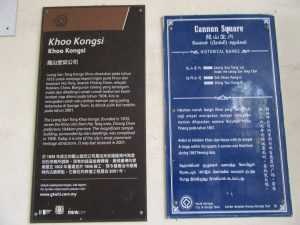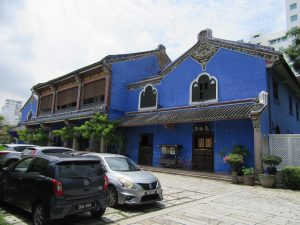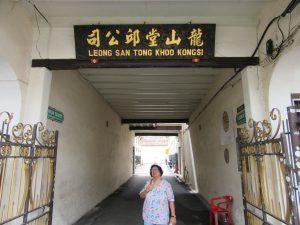Priyan R Naik
Shillong has its ‘La Chaumiere House’, built by Khwaja Salimullah, the 3rd Nawab of Dhaka. With a facade of an early 20th-century English clubhouse, an extended porch overlooking the lawns, the mezzanine floor and other classic Scottish features, the ‘House’ stands out as a proud symbol of Shillong’s cosmopolitanism. So does the ‘Pinewood Hotel’, built by a Swiss couple in the late 19th century, as old as its pine trees, the 100-yr-old Pinewood Hotel, the oldest in Meghalaya, is heritage property!
Just like in Shillong, Penang, a state in northwest Malaysia is home to colonial landmarks and ornate Chinese mansions such as Cheong Fatt Tze, the Khoo Kongsi and the Pinang Peranakan Mansions, all testament to centuries of foreign influence. Like their Shillong counterparts they too have been converted into either museums or hotels.

I decided to visit the Cheong Fatt Tze Mansion, painted in distinct indigo-blue, also known as ‘The Blue Mansion’, an impressive Chinese historical building in Penang, built by a merchant Cheong Fatt Tze, once regarded as the richest person in Malaya. Now a boutique hotel, I had to marvel at the architecture even as I understood the impact of Chinese history on Penang. Cheong Fatt Tze had aspired to house his descendants in a home personifying the essence of majesty and elegance. Bricks were laid painstakingly after a thorough consultation with the era’s leading Feng Shui masters, incorporating the sophisticated beauty of traditional Chinese houses, artisans from Southern China and building materials from Scotland were acquired to ensure quality. The mansion was then a pivot of the city radiating an unceasing, enigmatic rhythm of activity. Home to his favored 7th wife, it also housed the Chinese Vice-Consulate. Conservationists took six years to rebuild the Blue Mansion after it fell into disrepair following the death of the merchant, making it today a treat to behold. Most reluctantly I had to leave to visit the next mansion on my list.

The Pinang Peranakan Mansion was built by the Peranakans, another prominent Chinese community who adopted the ways of local Malays and later of the colonial British, creating a unique set of customs, leaving behind a rich legacy of antiques, cultural influences, cuisines and language. Their mansion was painted green and had once served as the office-cum-residence of a 19th-century Chinese tycoon Chung Keng Quee. The mansion recreated the opulent lifestyle of the Peranakans, the Straits Chinese, while displaying several antiques and collectibles of that era, showcasing typical interior designs and customs like long grand dining tables. Their unique architecture and interior design has been featured in today’s television series and reality TV shows. I felt like walking into a time capsule where every corner had fascinating intricate carvings, hand-painted tiles and grand chandeliers overhanging a massive wedding bed that was ‘Instagram-worthy but cursed’, a factoid our passionate guide did not forget to mention.
The third mansion on my list was the residence of the Khoo Kongsi, one of five big Hokkien Chinese clans that formed the backbone of the Hokkien community in early Penang. The largest Hokkien clan house in Malaysia, the elaborate and highly ornamented architecture made it one of Penang’s major historic attractions. This clan house continues to retain its authentic setting, a traditional theater, row-houses for clan members clustered around a granite-paved square, exuding a palpable old world charm, leaving behind an architectural delight letting today’s generation study and absorb the historical details of the place and its surroundings.

Be it Shillong or Penang, showcasing an opulent lifestyle with colonial-era architecture, the mansions blend local and colonial architectural styles, historical landmarks with tales of a colonial past, reminiscing an era of trade, migration and cultural exchanges, sharing between them a rich legacy of colonial history, architectural beauty and cultural significance.



